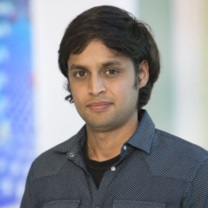Applications of Pulsed/Ultrafast Lasers in Spectroscopy, Biophotonics, and Micromachining
A special issue of Applied Sciences (ISSN 2076-3417). This special issue belongs to the section "Optics and Lasers".
Deadline for manuscript submissions: closed (30 September 2023) | Viewed by 31263
Special Issue Editors
Interests: ultrafast laser writing; laser micromachining; NV diamond; integrated quantum photonics; spectroscopy; femtosecond laser nanofabrication
Interests: biophotonics; fluorescence; Raman spectroscopy; cancer detection; diffused optics; chip-on-tip; time of flight spectroscopy; ultrafast lasers
Special Issue Information
Dear Colleagues,
In recent years, pulsed/ultrafast lasers have been widely used for technological developments and scientific research. The unique properties of short pulse widths and intense peak powers have enabled progress in various fields of industry and research.
This Special Issue is aimed at providing a platform to showcase state-of-the-art research in utilizing pulsed and ultrafast lasers for various applications such as:
- Pulsed/Ultrafast laser spectroscopy and imaging;
- Lasers in biophotonic applications;
- Diffuse optics, Raman, fluorescence spectroscopy, chip-on-tip applications;
- Laser micromachining for industrial applications;
- Ultrafast laser inscription for lab-on-a-chip applications;
- Laser–matter interaction studies;
The Special Issue intends to benefit and promote optics research at numerous laser labs around the world and influence the laser industry towards improved technological development of ultrafast lasers. The Special Issue will consist of original research articles, short communications, review papers, dataset compilations and persepective articles.
We kindly invite you to contribute to the Special Issue and be part of this endeavour to promote laser science research and become visible to the interest of scientific community.
Dr. Vibhav Bharadwaj
Dr. Sanathana Konugolu Venkata Sekar
Guest Editors
Manuscript Submission Information
Manuscripts should be submitted online at www.mdpi.com by registering and logging in to this website. Once you are registered, click here to go to the submission form. Manuscripts can be submitted until the deadline. All submissions that pass pre-check are peer-reviewed. Accepted papers will be published continuously in the journal (as soon as accepted) and will be listed together on the special issue website. Research articles, review articles as well as short communications are invited. For planned papers, a title and short abstract (about 100 words) can be sent to the Editorial Office for announcement on this website.
Submitted manuscripts should not have been published previously, nor be under consideration for publication elsewhere (except conference proceedings papers). All manuscripts are thoroughly refereed through a single-blind peer-review process. A guide for authors and other relevant information for submission of manuscripts is available on the Instructions for Authors page. Applied Sciences is an international peer-reviewed open access semimonthly journal published by MDPI.
Please visit the Instructions for Authors page before submitting a manuscript. The Article Processing Charge (APC) for publication in this open access journal is 2400 CHF (Swiss Francs). Submitted papers should be well formatted and use good English. Authors may use MDPI's English editing service prior to publication or during author revisions.
Keywords
- ultrafast lasers
- laser spectroscopy
- laser imaging
- biomedical optics
- biophotonics
- laser micromachining
- lab-on-a-chip






